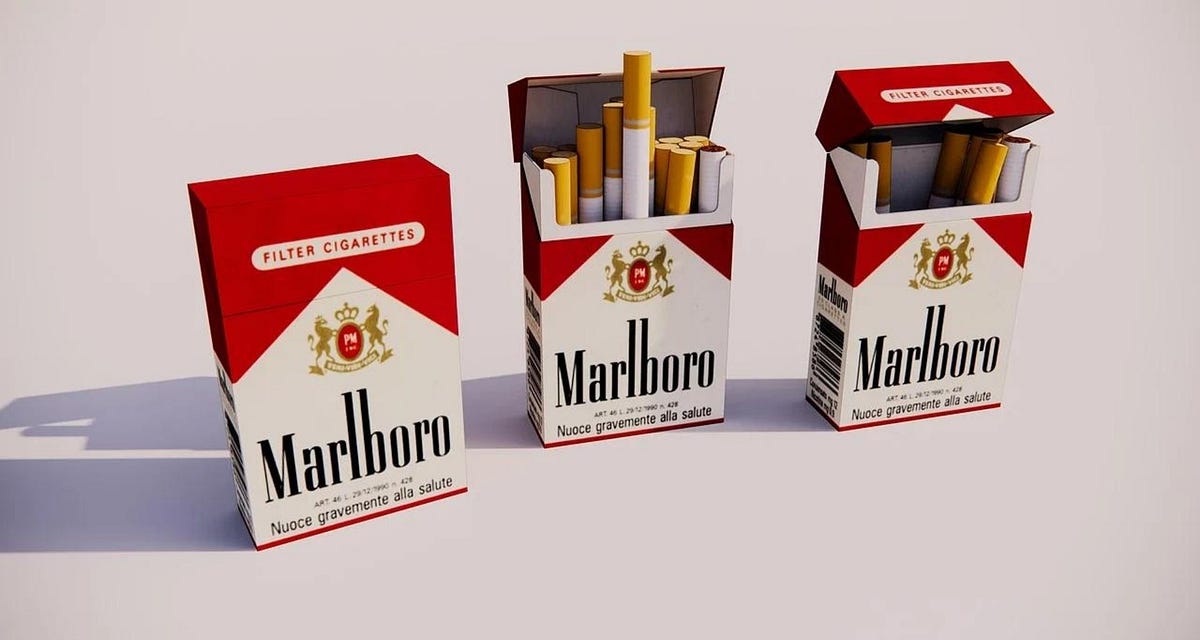Marlboro cigarettes have been a staple in the smoking industry for decades. From its humble beginnings as a women’s cigarette to its iconic status as a symbol of rugged masculinity, Marlboro has undergone significant changes in both packaging and advertising throughout the years. In this blog post, we will explore the evolution of Marlboro cigarettes’ packaging and advertising from their early days to modern times, including their most famous campaign featuring the Marlboro Man. So grab your pack of smokes (if you’re so inclined) and join us on this journey through time!
The Origin of Marlboro Cigarettes
Marlboro cigarettes were first introduced in the United States in 1924 by Philip Morris. Initially marketed as a cigarette brand for women, Marlboro had a distinctive red band around the filter to hide lipstick stains. However, sales of Marlboro remained low until the 1950s when its fortunes began to change.
In response to declining sales and increased competition from rival brands, Philip Morris decided to rebrand Marlboro as a cigarette for men. The company’s new marketing campaign was aimed at young men who wanted to feel tough and independent.
To appeal to this target audience, Philip Morris created an advertising campaign centered around the idea of rugged masculinity. This campaign featured images of cowboys doing hard work on ranches while smoking Marlboros. The tagline “Come To Where The Flavor Is” also helped solidify their image as a strong flavor profile.
The rebranding worked wonders for Marlboro – within four years of launching its new marketing strategy, it became America’s best-selling filtered cigarette brand. Today, it remains one of the most popular cigarette brands worldwide thanks largely due to its successful packaging design and continued messaging towards toughness and independence among smokers everywhere
Early Marlboro Cigarette Packaging and Advertising
In the early days of Marlboro cigarettes, they were marketed towards women as a “mild as May” option. The packaging was adorned with a red band and featured a stylized crest that included an eagle. This design remained until 1942 when production was halted due to World War II.
After the war, Marlboro attempted to rebrand itself as a masculine cigarette for men. The company redesigned its packaging with white lettering on a red background, similar to the American flag. However, this new look failed to resonate with consumers.
It wasn’t until Leo Burnett advertising agency came up with the idea of using the rugged image of the American cowboy in their marketing campaign that Marlboro became one of the best-selling brands worldwide. In 1954, Marlboro launched its iconic “Marlboro Man” ad campaign featuring cowboys engaging in various outdoor activities such as horseback riding and cattle herding.
The ads portrayed smoking cigarettes as manly and tough while also appealing to those who enjoyed adventure and living life on their own terms. This successful marketing strategy helped turn Marlboro into one of America’s most popular cigarette brands –but at what cost?
The Marlboro Man
The Marlboro Man is arguably one of the most iconic figures in advertising history. Introduced in the early 1950s, this cowboy character was used to sell Marlboro cigarettes and quickly became synonymous with the brand.
The original Marlboro Man was portrayed as a rugged cowboy, often seen riding horses or working on ranches. This image was meant to appeal to men who wanted to be seen as tough and independent.
Over time, the Marlboro Man evolved into different variations, including a variety of different cowboys such as rodeo riders and even a pilot. No matter what version of the character was used, however, he always represented masculinity and strength.
Despite its popularity among consumers, some critics have argued that using an image like the Marlboro Man glamorizes smoking and contributes to tobacco addiction. Despite these criticisms, however, there’s no denying that this figure played an important role in shaping not only cigarette advertising but also American culture itself.
Modern Marlboro Cigarette Packaging and Advertising
Modern Marlboro cigarette packaging and advertising has seen significant changes over the years. In response to increasing regulations on tobacco advertising, Marlboro has shifted its focus towards lifestyle branding rather than promoting smoking.
The iconic red and white packaging remains largely unchanged, but additional health warnings have been added. However, it is in their advertising campaigns that Marlboro has made the most significant changes. The famous “Marlboro Man” campaign came under fire for promoting a rugged cowboy image that appealed to young males.
In recent years, Marlboro’s advertising campaigns have featured more diverse images of people enjoying outdoor activities such as hiking or surfing. They’ve also introduced new flavors and variations of their classic blend to appeal to a wider audience.
Despite these efforts, however, public perception of tobacco marketing remains negative. Many argue that companies like Marlboro are still attempting to target vulnerable populations through subtle messaging in their advertisements.
While modern Marlboro cigarette packaging and advertising may look different from its earlier iterations, concerns surrounding the impact of tobacco use on public health remain justifiably high.
Conclusion
The evolution of Marlboro cigarettes’ packaging and advertising has been a fascinating journey. From its early days as a women’s cigarette brand to becoming one of the most popular brands in the world, Marlboro has managed to reinvent itself time and again.
The introduction of the Marlboro Man campaign was a turning point for the brand and helped cement its position as an icon of American culture. The rugged cowboy image created by Leo Burnett captured the imagination of millions and turned Marlboro into more than just a cigarette – it became an emblematic symbol.
Today, with new regulations on tobacco advertising and packaging, Marlboro continues to adapt. Its current minimalist design speaks volumes about how far it has come since its early days when it was marketed towards women.
As society changes, so too does our perception of smoking. But regardless of whether you smoke or not, there’s no denying that Marlboro’s impact on popular culture is significant and enduring.








Comments on “The Evolution of Marlboro Cigarettes’ Packaging and Advertising”
Comments are closed.